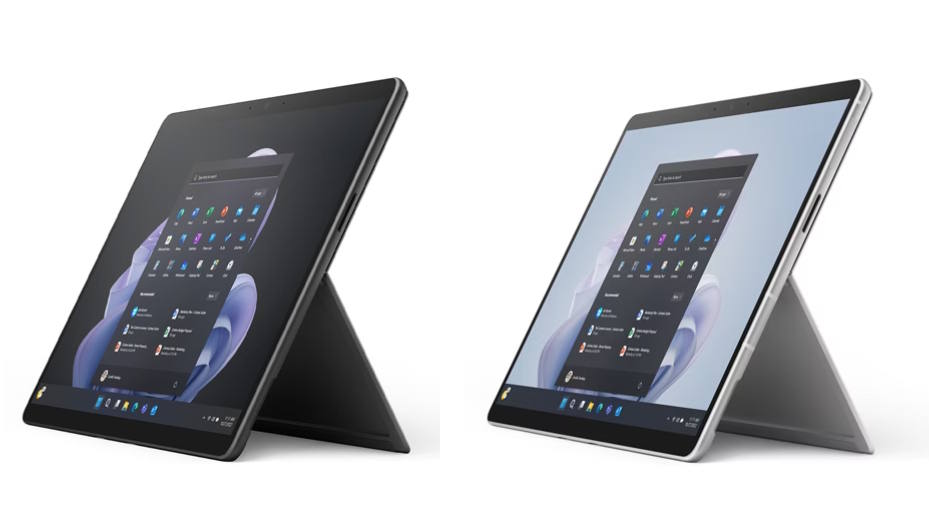Released in October 2022, the Microsoft Surface Pro 9 continued the legacy of the Surface Pro lineup, blending the flexibility of a tablet with the power of a laptop. It brought a mix of refinements and bold changes, including a split between Intel and ARM-based models. But did it truly revolutionize the Surface experience, or was it just an incremental update? Let’s dive into the details.
Model Variants: Intel vs. ARM
For the first time, Microsoft offered the Surface Pro 9 in two distinct processor variants:
- Intel-based models – Powered by 12th Gen Intel Core i5 and i7 processors (Alder Lake), these models focused on performance, catering to professionals and power users.
- ARM-based model – Featuring the Microsoft SQ3 chip (co-developed with Qualcomm), this variant aimed at battery efficiency and always-connected 5G capability.
Key Improvements Over Previous Models

Performance Gains Over Surface Pro 8 and Surface Pro 7+
Compared to its predecessors, the Surface Pro 9 delivered noticeable upgrades:
- The Intel 12th Gen chips introduced improved multi-core performance, making it a better choice for multitasking and demanding applications.
- The ARM-based SQ3 version brought enhanced AI capabilities, including noise-canceling features and real-time subtitles.
- Faster LPDDR5 RAM (up to 32GB) compared to LPDDR4x in Surface Pro 8, improving speed and efficiency.
- Storage options remained removable SSDs (up to 1TB), ensuring easy upgrades and replacements.
Design and Display Enhancements
The Surface Pro 9 maintained the sleek 13-inch PixelSense Flow Display (2880 x 1920 resolution) with a 120Hz refresh rate, offering a smoother experience than the 60Hz default of Surface Pro 7+. However, compared to the Surface Pro 8, the display changes were minimal.
One major difference was the introduction of new color options, including Sapphire and Forest, in addition to the standard Platinum and Graphite.
Windows OS and Software Experience
The Surface Pro 9 launched with Windows 11, optimized for touchscreen interactions. The ARM-based model introduced new AI-driven features like automatic framing in video calls, but software compatibility remained a concern due to some legacy apps still struggling with Windows on ARM.
Battery Life: Gains and Trade-offs
- Intel Model: Up to 15.5 hours (similar to Surface Pro 8, though real-world use was closer to 8-10 hours).
- ARM-based SQ3 Model: Up to 19 hours, making it the best Surface Pro for battery longevity, though performance wasn’t on par with Intel variants.
Downsides and Limitations
Despite its refinements, the Surface Pro 9 wasn’t perfect:
- No headphone jack – A controversial removal, forcing users to rely on USB-C or Bluetooth audio.
- ARM model software compatibility – Some older x86 apps ran poorly on the SQ3 chip, limiting its appeal.
- Same keyboard and accessories – No significant upgrades to the Surface Keyboard or Slim Pen 2.
- Higher price – The cost increased slightly over previous generations, making it a tough sell for some users.
Conclusion: Was It Worth the Upgrade?
The Surface Pro 9 refined Microsoft’s premium 2-in-1 experience but wasn’t a groundbreaking leap forward. The Intel version excelled in performance, while the ARM model introduced exciting battery life and AI-driven features, though with software trade-offs. If you owned a Surface Pro 7+ or earlier, upgrading made sense. But for Surface Pro 8 users, the improvements were minor unless you needed 5G or better efficiency.
Would you pick the Surface Pro 9 over its predecessors? Let us know in the comments!